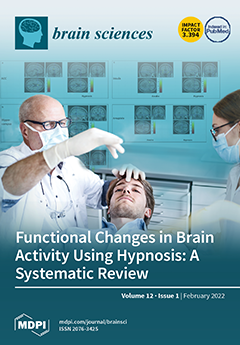Current therapies for high-grade gliomas, particularly glioblastomas (GBM), do not extend patient survival beyond 16–22 months. OKN-007 (OKlahoma Nitrone 007), which is currently in phase II (multi-institutional) clinical trials for GBM patients, and has demonstrated efficacy in several rodent and human xenograft glioma
[...] Read more.
Current therapies for high-grade gliomas, particularly glioblastomas (GBM), do not extend patient survival beyond 16–22 months. OKN-007 (OKlahoma Nitrone 007), which is currently in phase II (multi-institutional) clinical trials for GBM patients, and has demonstrated efficacy in several rodent and human xenograft glioma models, shows some promise as an anti-glioma therapeutic, as it affects most aspects of tumorigenesis (tumor cell proliferation, angiogenesis, migration, and apoptosis). Combined with the chemotherapeutic agent temozolomide (TMZ), OKN-007 is even more effective by affecting chemo-resistant tumor cells. In this study, mass spectrometry (MS) methodology ESI-MS, mass peak analysis (Leave One Out Cross Validation (LOOCV) and tandem MS peptide sequence analyses), and bioinformatics analyses (Ingenuity
® Pathway Analysis (IPA
®)), were used to identify up- or down-regulated proteins in the blood sera of F98 glioma-bearing rats, that were either untreated or treated with OKN-007. Proteins of interest identified by tandem MS-MS that were decreased in sera from tumor-bearing rats that were either OKN-007-treated or untreated included ABCA2, ATP5B, CNTN2, ITGA3, KMT2D, MYCBP2, NOTCH3, and VCAN. Conversely, proteins of interest in tumor-bearing rats that were elevated following OKN-007 treatment included ABCA6, ADAMTS18, VWA8, MACF1, and LAMA5. These findings, in general, support our previous gene analysis, indicating that OKN-007 may be effective against the ECM. These findings also surmise that OKN-007 may be more effective against oligodendrogliomas, other brain tumors such as medulloblastoma, and possibly other types of cancers.
Full article






